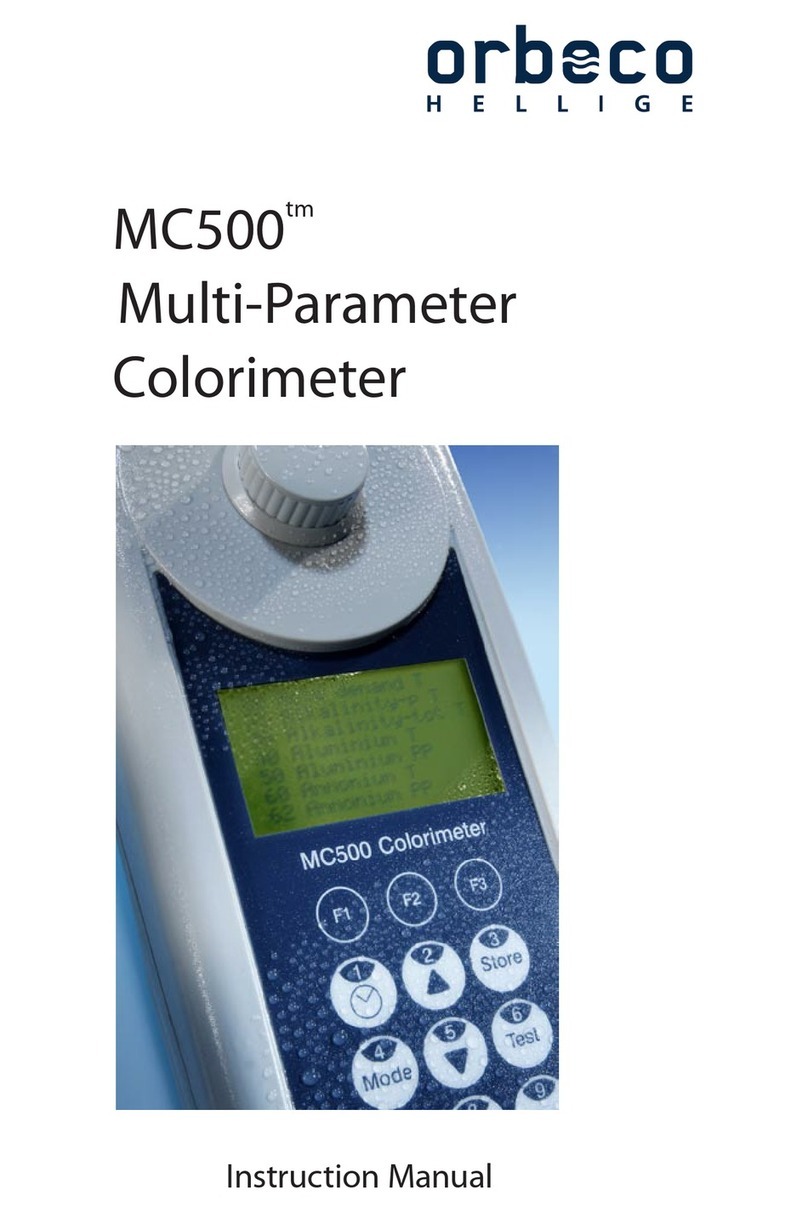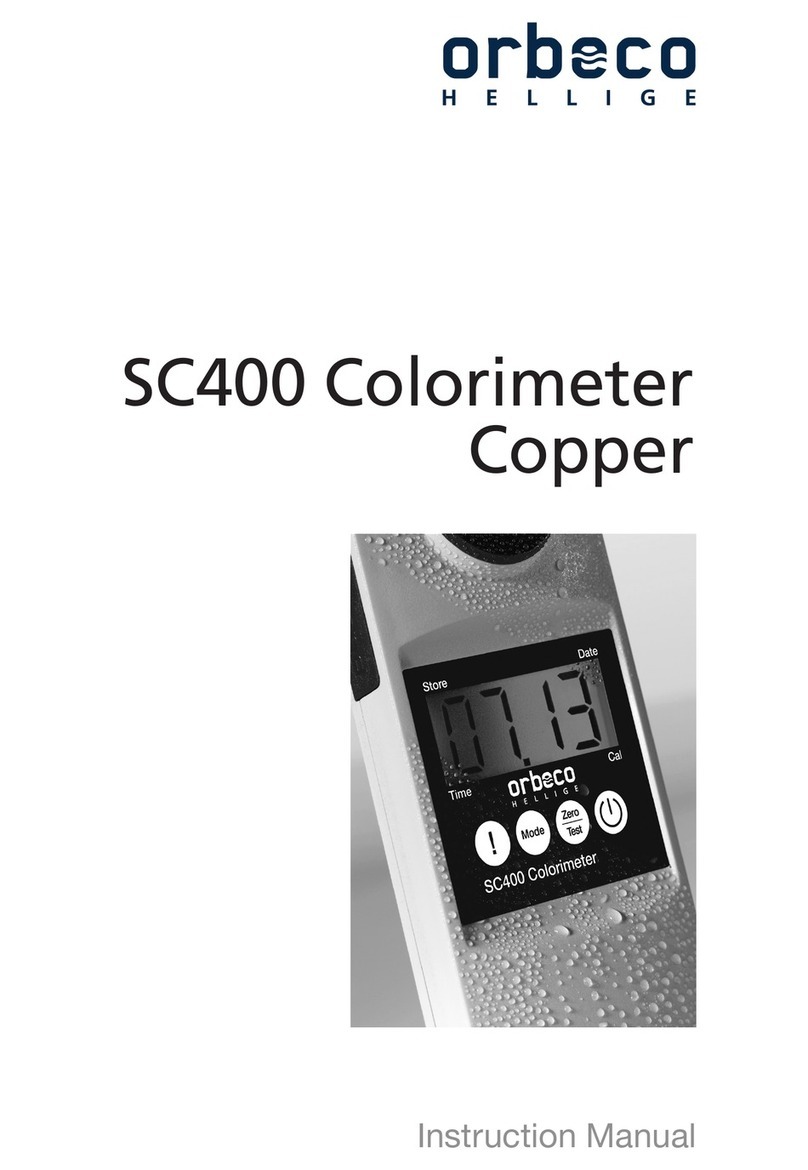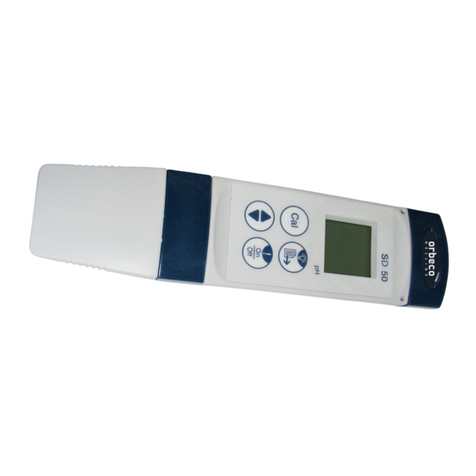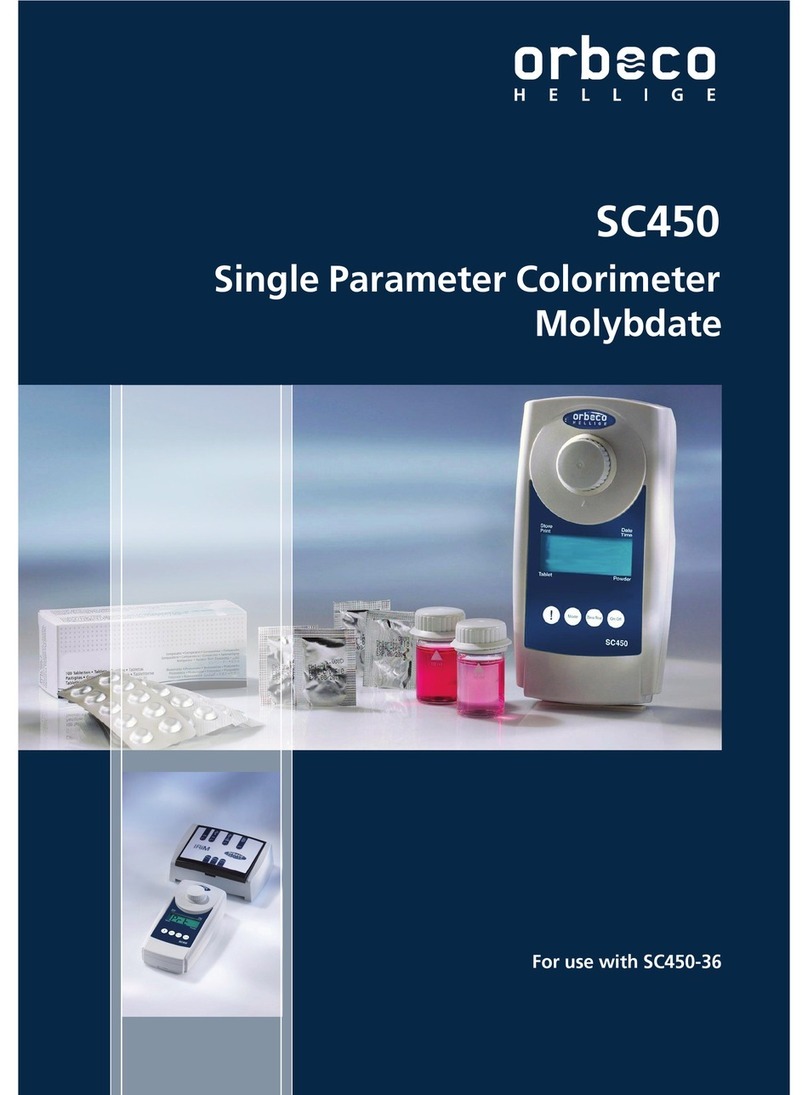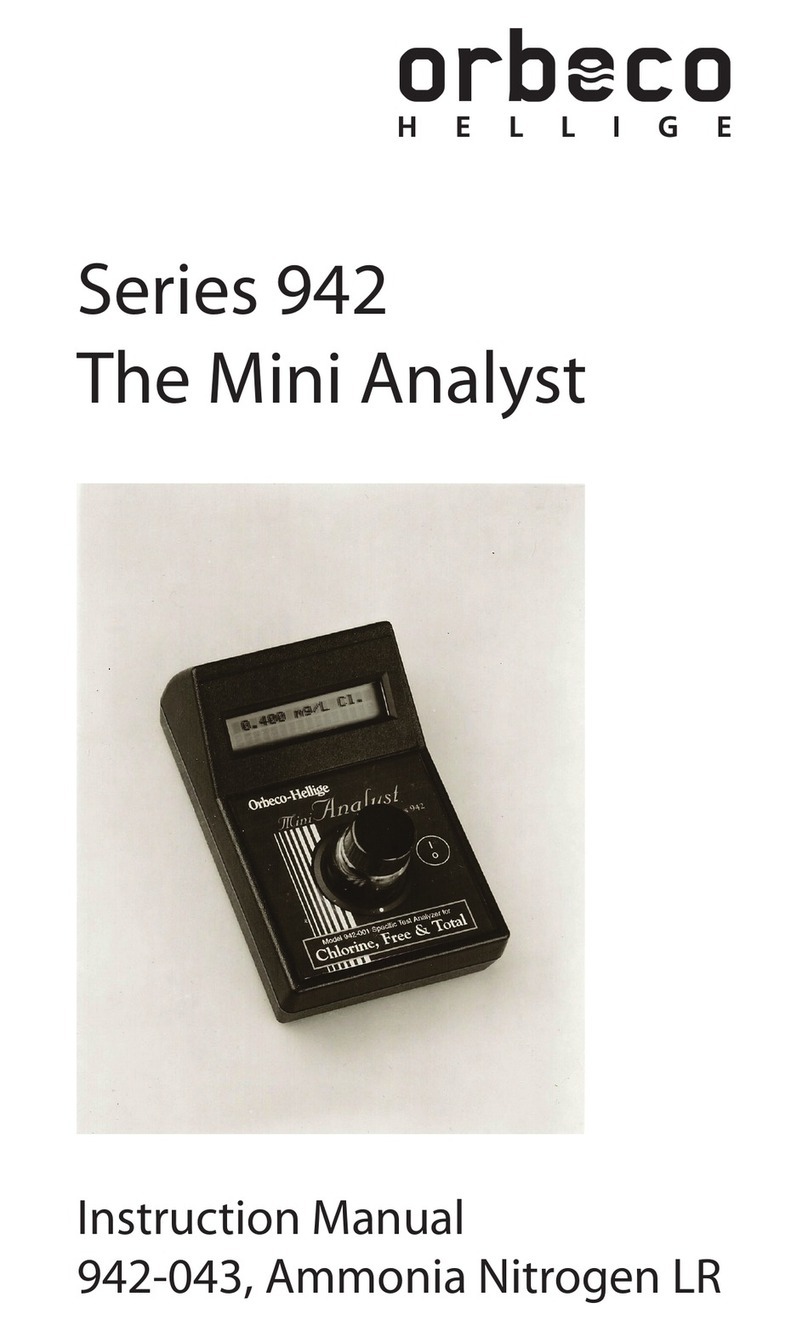
9
2.3 Range Expansion - How To Cover Higher Ranges by Dilution
If “Dilute and Retest” appears on the display, the test result is higher than the normal range of the test. The
sample must be diluted, the test repeated, and the result multiplied by the applicable“Dilution Factor, “ as
follows:
1. Optional No. A138 Graduated Test Vial permits routine dilutions to be made easily and
quickly. Simply add sample to either the 10, 20, 25, or 50mL graduation, add deionized water
to the 100mL mark, cap and mix. Repeat the test using 10mL of the diluted mixture, and
multiply the reading by the Dilution Factor (10, 5, 4, or 2 respectively). For Example:
Fill Vial to Add Deionized Multiply Reading by
Graduation Water to Dilution Factor
_________________________________________________________________
50mL 100mL 2 X
25mL 100mL 4 X
20mL 100mL 5 X
10mL 100mL 10 X
2. Alternately, for highest precision, use a Class A laboratory volumetric pipette to measure the
above sample volumes, transfer to a Class A 100mL volumetric ask, add deionized water to
the graduation, stopper, and invert several times to mix. Repeat the test with a 10mL portion,
and multiply the result by the dilution factor.
3. For an approximate ranging test, measure 5mL (or smaller volume) into a sample tube and
dilute to the 10mL line with distilled or deionized water. Perform the test, and multiply
instrument reading by 10 divided by the measured volume.
2.4 Meaning of “Blank” and “Sample” Tubes
Each procedure gives instructions for their preparation. A“BLANK” tube is one which contains a sample that
is untreated (has not had a tablet or reagent added to it), or which contains none of the unknown (consists
of deionized water plus the reagent(s) used in the test). When placed in the 942, it enables the instrument
to automatically standardize itself. The “BLANK” tube compensates for any original, inherent color in the test
sample that has nothing to do with the color that the tablet or reagent will impart to the sample during the
test. If the sample is completely clear and colorless, then deionized water may be substituted for the sample
in the “BLANK” tube.
The name “SAMPLE” tube is given to the tube which contains the sample under test, to which the tablet(s)
or reagent(s) have been added in accordance with the test procedure. Once standardized with the“BLANK”
tube, the model 942 photometrically measures the color of the reagent-treated sample in the“SAMPLE”
tube, calculates, and shows the test result in the display.












